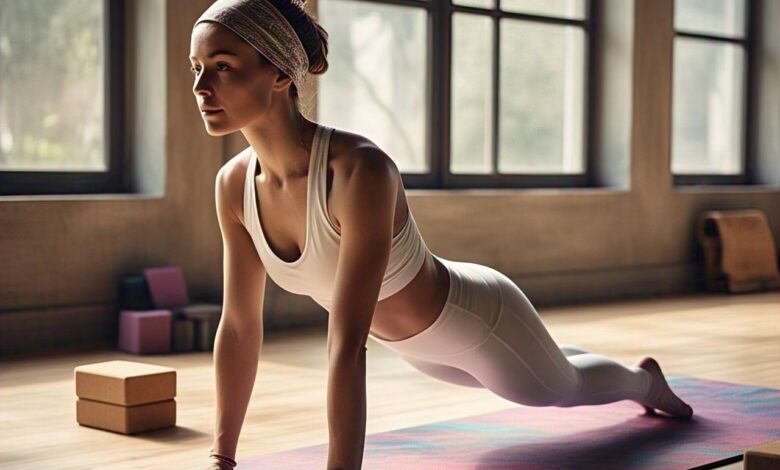Why the Best Yoga Mat Can Transform Your Yoga Practice

When it comes to practicing yoga, the best yoga mat can make all the difference. Whether you’re a seasoned yogi or just starting out, finding the right mat can elevate your practice by providing comfort, support, and stability. A high-quality mat helps keep you grounded during challenging poses and ensures your joints are cushioned during floor exercises.
In this guide, we’ve researched and tested several options to help you find the best yoga mat for your needs. From non-slip surfaces to extra cushion for your knees, we’ll break down the features to look for and recommend top picks that will enhance your yoga sessions. No matter your style—whether you practice at home or in the studio—this post will help you choose the perfect mat.
Why the Best Yoga Mat is Essential for Your Practice
When you’re starting your yoga journey, having the best yoga mat is very important. A good mat can make your practice easier and more enjoyable. It helps you stay comfortable and safe, giving you a better grip on your poses. A poor-quality mat may slip around or feel too hard, which could make your practice frustrating.
A quality mat also ensures your joints are protected, especially during floor-based poses like child’s pose or when you do planks. Without the right mat, you could feel sore afterward or even hurt yourself. The best yoga mat should provide a good balance between comfort, support, and grip to give you the best experience.
A yoga mat also helps you focus on your practice. It’s your space, and having the right one means you can let go of distractions and concentrate on your flow. This is why choosing the best mat can truly enhance your yoga experience. It’s not just about looking for something pretty; it’s about finding a mat that makes your practice safer and more fun.
How to Choose the Best Yoga Mat: Key Features to Consider
When shopping for the best yoga mat, there are a few things to look for to make sure you get the right one for your needs. The first thing to think about is grip. A good mat will stay in place, even when you sweat. If a mat is too slippery, it can make poses like downward dog or warrior difficult.
Next, think about comfort. Some mats are thicker than others. If you have joint pain or want extra cushioning, you might prefer a thicker mat. However, a thick mat might make balancing poses a bit tricky. For regular yoga sessions, a 4mm to 5mm thick mat usually works best because it offers a good balance of comfort and stability.
Another important factor is durability. You’ll want your mat to last for a long time, even with regular use. If you practice yoga every day, invest in a mat made of high-quality materials. Mats made from natural rubber or TPE (Thermoplastic Elastomer) are eco-friendly and durable. But if you only practice once a week, you might get by with a less expensive mat.
Best Yoga Mats for Beginners: Finding Comfort and Support
If you’re just starting your yoga practice, it’s important to choose a mat that gives you comfort and support. Beginners often need more cushioning to protect their joints, especially their knees and wrists. A thicker mat can help with this by giving you a soft surface to work on, making your first experiences more pleasant.
Look for mats with extra padding but still enough firmness to help you stay balanced. The best yoga mat for beginners should also provide good grip so you don’t slip during poses. Many mats for beginners are also lightweight, which makes them easier to carry to and from classes or home workouts.
Also, consider a mat with alignment markers. These are lines or shapes on the mat that help guide your hands and feet into the right position. They’re especially helpful for beginners who are learning the proper form and don’t want to make mistakes.
Best Yoga Mats for Hot Yoga: Stay Gripped and Comfortable
Hot yoga is practiced in a room that’s heated to high temperatures. This can make you sweat a lot, which could cause you to slip on a mat that doesn’t have enough grip. So, finding the best yoga mat for hot yoga is key.
Mats made with high-quality rubber or PVC tend to be ideal for hot yoga. These materials can hold onto the sweat and still keep their grip. In addition to grip, look for mats that are quick-drying, so you don’t have to deal with a soggy mat during your practice.
Another important feature to look for in hot yoga mats is their durability. The heat and sweat can wear down mats quickly, so go for a mat designed specifically for hot yoga to ensure it lasts.
Top Picks for Hot Yoga Mats
- Manduka Pro Yoga Mat: Known for its non-slip surface and durability.
- Liforme Yoga Mat: Made from eco-friendly material, providing excellent grip.
- Jade Yoga Harmony Mat: A great option for eco-conscious yogis who need a mat with extra grip.
How to Take Care of the Best Yoga Mat: Tips to Keep It Like New
Once you’ve found the best yoga mat, you want it to last as long as possible. Proper care will help keep it in great shape for years. The first tip is to clean your mat regularly. Most mats can be wiped down with a damp cloth after each practice. You can also wash it with a gentle cleaner if needed.
To avoid damage, store your mat properly. Don’t leave it in direct sunlight or in a damp place, as it can cause the material to break down over time. Rolling your mat tightly and storing it in a cool, dry place will help it stay in good condition.
If your mat is starting to lose its grip or show signs of wear, it might be time to replace it. Mats that are used a lot may need more care, so make sure you check it regularly for any tears or slippery spots. Taking care of your mat will ensure it stays comfortable and reliable for your practice.
How to Choose the Right Thickness for the Best Yoga Mat
When picking the best yoga mat, thickness is a key factor to consider. If you need more cushioning, a thicker mat, around 6mm, might be best for you. These mats are great for those with sensitive knees or joint pain because they offer extra padding. However, thicker mats can sometimes make balancing more challenging, so it’s important to find one that works for your level of comfort.
If you’re more experienced or looking for a mat that is easy to transport, a thinner mat (around 3mm to 4mm) is a better option. Thinner mats provide more stability, especially for standing poses, and are lightweight, making them easier to carry around. The key is to find a mat that matches your body type and the type of yoga you practice most.
Material Matters: Best Materials for Yoga Mats
When searching for the best yoga mat, the material is just as important as the thickness. There are different materials to choose from, each offering unique benefits. For example, rubber mats provide excellent grip and durability, making them ideal for hot yoga and more intense practices. They also offer natural cushioning but can be a bit heavier.
On the other hand, mats made from TPE (Thermoplastic Elastomer) are more eco-friendly and lightweight. TPE mats are non-toxic and free of harmful chemicals, which is a great option if you’re environmentally conscious. These mats are slightly less grippy than rubber but still provide adequate support for most yoga styles. Each material has its pros and cons, so choose one that suits your practice, body, and preferences best.
Conclusion
In conclusion, choosing the best yoga mat can make a huge difference in your yoga practice. A good mat will provide comfort, support, and grip, allowing you to focus on your poses without worrying about slipping or discomfort. Whether you’re a beginner or an advanced yogi, there’s a mat out there that will suit your needs and help you practice safely and effectively.
Remember, the best yoga mat for you is the one that matches your style, comfort, and durability preferences. Take your time to explore different mats, and make sure to consider the thickness, material, and grip to find the one that feels just right. With the right mat, your yoga practice will be more enjoyable, safe, and successful.
FAQs
Q: What is the best yoga mat for beginners?
A: The best yoga mat for beginners is one that is comfortable and provides enough grip. Look for a 4mm to 5mm thick mat for extra support.
Q: Can I use a yoga mat for other exercises?
A: Yes! Many yoga mats are versatile and can be used for stretching, Pilates, or even light strength training.
Q: How do I clean my yoga mat?
A: You can clean your yoga mat with a damp cloth and a gentle cleaner. Let it air dry after cleaning to avoid damage.
Q: Are thicker mats better for yoga?
A: Thicker mats offer more cushion, but they can make balancing harder. A medium thickness, around 4mm to 5mm, works well for most people.
Q: How do I stop my yoga mat from slipping?
A: To prevent slipping, choose a mat with a good grip made from rubber or TPE. Make sure to clean it regularly to maintain its stickiness.





